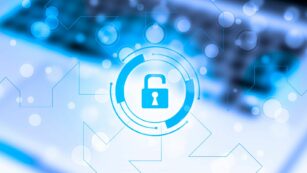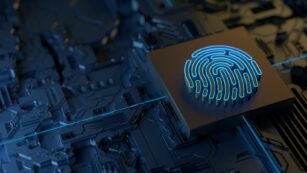In the digital era where data is the new gold, cybersecurity professionals stand as the guardians of this precious resource. They’re the unsung heroes, tirelessly working behind the scenes to ensure our virtual world remains safe from the ever-evolving threats. But what exactly do these digital defenders do?
What Do Cybersecurity Professionals Do
Maintaining the safety and integrity of digital systems becomes the primary pursuit for cybersecurity professionals; they safeguard data by identifying threats, executing protective measures, and continuously monitoring systems for intrusions.
The Basics of Cybersecurity Roles
 In essence, cybersecurity professionals ensure protection against virtual threats that seek to compromise information security. Their roles extend beyond ensuring the confidentiality of data. They ensure the availability and integrity of data as well, encompassing three essential components—confidentiality, integrity, and availability, often referred to as the CIA triad. For example, cybersecurity specialists may focus on areas like application security, where they aim to defend software and data from threats; network security, where they guard against intrusion and disruptions; and operational security, where they protect data in transit and at rest.
In essence, cybersecurity professionals ensure protection against virtual threats that seek to compromise information security. Their roles extend beyond ensuring the confidentiality of data. They ensure the availability and integrity of data as well, encompassing three essential components—confidentiality, integrity, and availability, often referred to as the CIA triad. For example, cybersecurity specialists may focus on areas like application security, where they aim to defend software and data from threats; network security, where they guard against intrusion and disruptions; and operational security, where they protect data in transit and at rest.
Key Responsibilities and Duties
Notably, cybersecurity professionals bear a variety of responsibilities. Primarily, they’re tasked with designing and implementing robust cyber defense systems to protect sensitive data from cyber assaults. That entails a thorough risk assessment, ensuring systems have as few vulnerabilities as possible. Secondly, they consistently monitor systems for suspicious activities. If, for instance, an unusual pattern is detected in network traffic, it becomes a cybersecurity professional’s duty to investigate and address the situation.
Moreover, they spearhead incident response, including documenting incidents, conducting post-incident analysis, and implementing corrective measures to prevent such occurrences in the future. Lastly, they educate employees on best cybersecurity practices, knowing that most cyber-attacks exploit human error.
Core Skills and Tools for Cybersecurity Professionals
Delving deeper into what do cybersecurity professionals do, analyzing their requisite skills and tools equips individuals to understand this specialized role better. Cybersecurity professionals boast diverse skill sets and utilize distinctive tools in their quest to fortify digital systems and data integrity.
Essential Skills for Success
 Undoubtedly, these professionals necessitate a strong foundation of specific skills. Primarily, they necessitate solid programming skills. Cybersecurity professionals often use programming languages such as Python, Java, and C++. Proficiency aids in understanding potential software vulnerabilities and developing protective solutions.
Undoubtedly, these professionals necessitate a strong foundation of specific skills. Primarily, they necessitate solid programming skills. Cybersecurity professionals often use programming languages such as Python, Java, and C++. Proficiency aids in understanding potential software vulnerabilities and developing protective solutions.
They also thrive on analytical thinking. Being able to analyze data, identify patterns, and interpret those patterns is essential in detecting potential threats. It aids in proactive threat hunting, interpreting suspicious activities, and creating threat intelligence reports.
Finally, comprehensive knowledge regarding system networks and operations becomes indispensable. Understanding computer networks, firewalls, and detecting vulnerabilities in these elements comprises the essence of what cybersecurity professionals do.
Common Tools and Technologies Used
 Turning to the tools and technologies utilized, they range from intrusion detection systems (IDS) to encryption tools. Intrusion detection systems aid in identifying unusual network activities, effectively alerting professionals to potential threats. On the other hand, encryption tools like OpenSSH, OpenSSL, and Tor help safeguard sensitive information from unauthorized third-party access.
Turning to the tools and technologies utilized, they range from intrusion detection systems (IDS) to encryption tools. Intrusion detection systems aid in identifying unusual network activities, effectively alerting professionals to potential threats. On the other hand, encryption tools like OpenSSH, OpenSSL, and Tor help safeguard sensitive information from unauthorized third-party access.
Furthermore, what do cybersecurity professionals do can’t be completely encapsulated without noting their use of security frameworks. Frameworks like NIST (National Institute of Standards and Technology) and CIS (Center for Internet Security) provide guidelines to establish effective defense strategies.
In addition, they employ Security Information and Event Management (SIEM) tools. SIEM software provides an expansive view of an organization’s IT security landscape, assists in threat detection, and enables fast response times.
Typical Day in the Life of a Cybersecurity Professional
A cybersecurity professional’s day isn’t all about thwarting high-profile cyberattacks. It’s grounded in routine tasks that enhance digital protection. Initially, they examine threats, inspecting rigorously for anomalies within their firm’s networks and systems. With the use of their advanced tools mentioned previously, like intrusion detection systems and encryption tools, potential vulnerabilities expose themselves.
Their day often involves upkeep of security frameworks like NIST and CIS, demonstrating how “what cybersecurity professionals do” extends far beyond reacting to immediate threats. Regular updates get applied, and the system gets scanned for any signs of attempted or successful breaches. Markdown reports, outlining prevalent threats and anomalies, get prepared for scheduled briefings.

